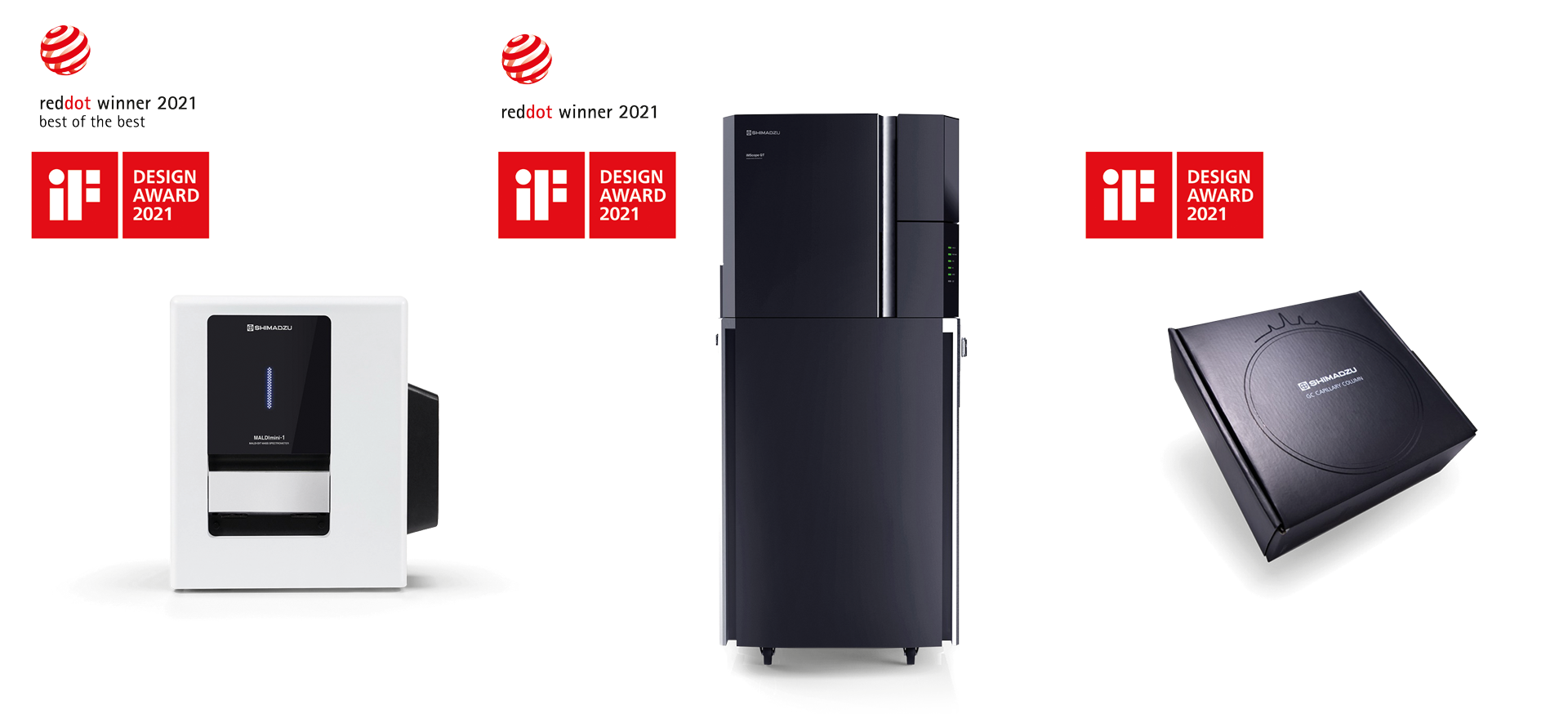And the awards go to …

With design making the world a more beautiful place and products more functional, intuitive use of equipment plays a key role in an increasingly technological environment. These aspects relate to user-friendliness, aesthetics and functionality. In Shimadzu´s product development in Japan, an entire team focuses on these design aspects. Their work has repeatedly achieved these most important design awards.
Red Dot Design Award and iF Design Award for Shimadzu products
Shimadzu’s design philosophy not only focuses on the usability of a device, but also on how to use a system to achieve results. User experience design (UX) and user interface design (UI) are buzzwords here: they ensure that a product is intuitive to use, and also good looking. The more sophisticated the UX/UI solutions, the happier the users and the better the results with the system.
This perspective plays a major role in the design of new devices. During the development phase, UI designers always put themselves in the role of users and their needs. This results in systems that are both aesthetic and functional, and always focusing on the user experience.
The combination of form and function makes Shimadzu systems convenient and efficient tools for laboratory use. International design organizations have also regularly recognized Shimadzu’s work in recent years. In 2021, three Shimadzu systems have been awarded.
Award-winning design
The Red Dot Design Award and the iF Design Award are among the top 3 most important design awards in the world. The international jury members of both awards evaluate the products submitted from all over the world according to criteria such as innovation, functionality, quality, ergonomics, aesthetics and durability. The award-winning products set standards for the future with their unique designs.
Shimadzu was once again able to impress the juries of both awards in 2021. The iMScope QT mass spectrometer imaging system received the “Red Dot: Design Award”, while the MALDImini-1 digital ion mass spectrometer was awarded the “Red Dot: Best of the Best” – the highest prize dedicated in the contest.
The Packaging Box for GC as well as the iMScope QT and the MALDImini-1 also received the iF Design Award. It is presented by the Hannover-based iF International Forum Design, the world’s oldest existing design organization.
The future begins with iMScope QT and MALDImini-1
The iMScope QT combines the LCMS-9030 Q-TOF mass spectrometer with an iMScope series optical microscope. It identifies and visualizes the dispersion of specific molecules and is suitable for medical and pharmaceutical applications as well as for food and agricultural industries. In cancer therapy, for example, the iMScope QT visualizes whether drugs work at their intended position in the body. During operation, it also ensures excellent speed, sensitivity and spatial resolution for data analysis.
The novel MALDImini-1 is a digital ion mass spectrometer which revolutionizes the MALDI market. It combines small floor space, minimal measurement time and microscale sample volume for highly sensitive MS measurements. It allows structural analysis of diverse substances such as peptides and digested proteins with ease. Presently, it is providing great assistance to scientists working on glycan-related substances in the context of COVID-19.
Environmentally-friendly Packaging Box for GC
The packaging design protects the fragile gas chromatography capillary columns from bumps and contamination during international transport as well as storage. Minimization of the material used, and the recyclable cardboard make the Packaging Box more environmentally friendly overall.
Combination of aesthetics and functionality
Design not only reflects pure aesthetics but is always an expression of functionality. In recent years, Shimadzu has received 11 Red Dot and iF Design Awards for its systems. The 2019 Red Dot Design Award-winning spectrophotometer UV-1900, for example, has a control panel designed according to ergonomic principles, positioned at the best possible viewing angle for easy readability. Shimadzu’s “Excellence in Science” approach is evident here not only in the technological progress, but also in the functional aesthetics, which ensure outstanding usability for operators.